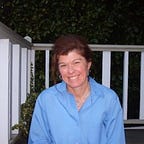What’s Beneath Us Impacts Us as Much as What’s Around Us
Learning about ourselves from the places we live
Plate tectonics brought me to Seattle.
The metaphor of plate tectonics has continued to intrigue me for years. I thrive on the bipolar rhythms of geological repression and release, of polite appearances and secrets undercut by socio-political explosions that distinguish Seattle. My history here has been both subdued and seismic. All of us who live in this city are equally intimately linked to this region’s geomorphology — the study of land forms and their evolution.
We are physically impacted in the Seattle area when the Juan de Fuca plate lurches.
But we don’t consider a violent street riot or a random act of violence as evidence of how our minds — individually and collectively linked — mirror the geology of our deeper landscape. Perhaps the emotions we suppress and pretend to forget are recycled like the rocky outer part of Earth, or lithosphere, returning as fire.
Geologically speaking, Seattle sits on a hotbed of tectonic activity. Nerve lines from faults extend beneath us. Off the Puget Sound coast, one tectonic plate slowly slips — is subducted — beneath another and seems to disappear.
Instead, it changes the arrangement of its substance, pushing into the distant ghost of a volcano. On a clear day, from a certain distance and height, you can see a string of volcanoes stretching from north of Portland to the Canadian border. The bigger landscape is always being scrunched and reshaped from underneath.
Dramatic motion is also evident on our surface. Seattle is a city of double lives and secrets, where repression and darkness are matched with brilliant inventions and Victorian politeness. Seattlelites are well known for their containment and coldness, counterbalanced by sparks of creativity and innovation like Microsoft, Amazon, Costco and the grunge music movement. People move to Puget Sound for its abundance of nature and have to contend with the gray days and the rain.
I first encountered Seattle as a kid on a rare family road trip. I remember spending time around the Space Needle and the once-permanent carnival at the base of that structure. I remember the long hallways of curios in the Pike Place Market.
Seattle revisited my life twenty years later in a church converted into a cinema in Santa Barbara. I was there with my husband, who was working on his Ph.D. in plate tectonics. We watched a documentary film called Streetwise about homeless kids in Seattle with photographs by Mary Ellen Mark. Watching Streetwise, I had a premonition — I would one day work with those teenagers.
Two years passed. The University of Washington recruited my husband to be an associate professor of geophysics. We arrived in our new city in October 1987, on Black Tuesday, the day the stock market tanked.
I tried to be a nice, yuppie housewife, but I failed.
My husband left Seattle to go on a research excursion, mapping the seafloor off the coast of Ecuador. I remembered StreetWise and went to find and volunteer at a homeless youth program called The Orion Center. Some kids from the film were still around. I was amazed by how emotionally direct and brutally honest the kids were.
It was like being in a room with my raw, hidden emotions embodied and swearing in my face. Street kids seemed like hot spots, openings for liquid flames to burn through the polite Seattle surface.
One day I was shooting pool at the Orion Center with a young Filipina female. She was dressed and had the demeanor of James Dean. She intimidated me.
It was my turn to play. As I bent down over the table, aiming for a solid ball, she leaned on her pool cue and said, “Honey, in case you didn’t know you’re a dyke.”
I missed my shot.
I’m married, I snapped back.
“Whatever you say, Mrs. Dyke,” she said. She sank two stripes and took the game.
Her words set in motion the subterranean mechanics that cracked my façade and everything I was repressing — my homosexuality, my childhood shadows, and an array of intense emotions pushing up from the deep.
I briefly moved to San Francisco, where my former housewife self became the new secret.
My ex-husband moved to Texas, where he still lives. After a year in SF, I eventually returned to Seattle to continue working with street kids and exploring the geo-tectonics of unspoken things.
I’ve been obsessed for years with Seattle’s tectonic cycles and how brilliant inventions and bursts of suppressed anger break our calm façade. Seattle has a history and rhythm of expansion and contraction.
The city was called the Soviet of the West in the 1930s, when radical labor leaned toward communism. In the 60s, there were frequent anti-war demonstrations. In the late 90s, WTO protests revealed more fractures in Seattle’s politics and history.
On the eve of the Nisqually Earthquake in 2001, there were riots in Pioneer Square sparked by public anger regarding Seattle’s ongoing class wars.
More recently, the 2020 Capitol Hill Organized Protest (CHOP) movement was sparked by protests about the death of George Floyd, which caused a backlash against Seattle police and a call by protestors to severely cut back on officers and change the focus of the police department.
The CHOP encampment was situated directly across from the police precinct. At one point, the CHOP folks tried to occupy the precinct. CHOP lasted a couple of months.
Covid-19 virus was already spreading across Washington State, the US, and the globe.
I am realizing these days how intimate the movements between the tectonic plates and the various unpredictable manifestations of global warming are.
We are all stitched together, repressing, releasing, and revisiting the movements of ice, earth, and fire.
